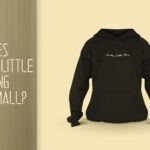You are going to need a serger at one time or another if you plan to be a sewer. But the question is, which one is the Best Serger for beginners? In today’s article, we’re going to be talking about the Best Serger for Beginners. I tried compiling a list based on features I find useful, practicality, and performance.
A Quick Look at My Favorite Sergers for Beginners
| Image | Product | Features | Price |
|---|---|---|---|
 | 9.7 | Check Price on Amazon | |
 | 9.5 | Check Price on Amazon | |
 | 9.1 | Check Price on Amazon | |
 | 8.8 | Check Price on Amazon | |
 | 8.6 | Check Price on Amazon |
Key Takeaways
- One of the best sergers for beginners is Janome 634D, a basic stitch serger.
- If you are a beginner, you need the basic stitch serger.
- A serger and a regular sewing machine can work together to finish a project. But they can not replace each other.
- In a serger, you should look for features like: Differential feed, Snap-on foot, Retractable knife blade
- Look for a serger with a color-coded thread guide if you are a beginner.
Top 5 Best Sergers For Beginners.
5. Brother Serger 1034D
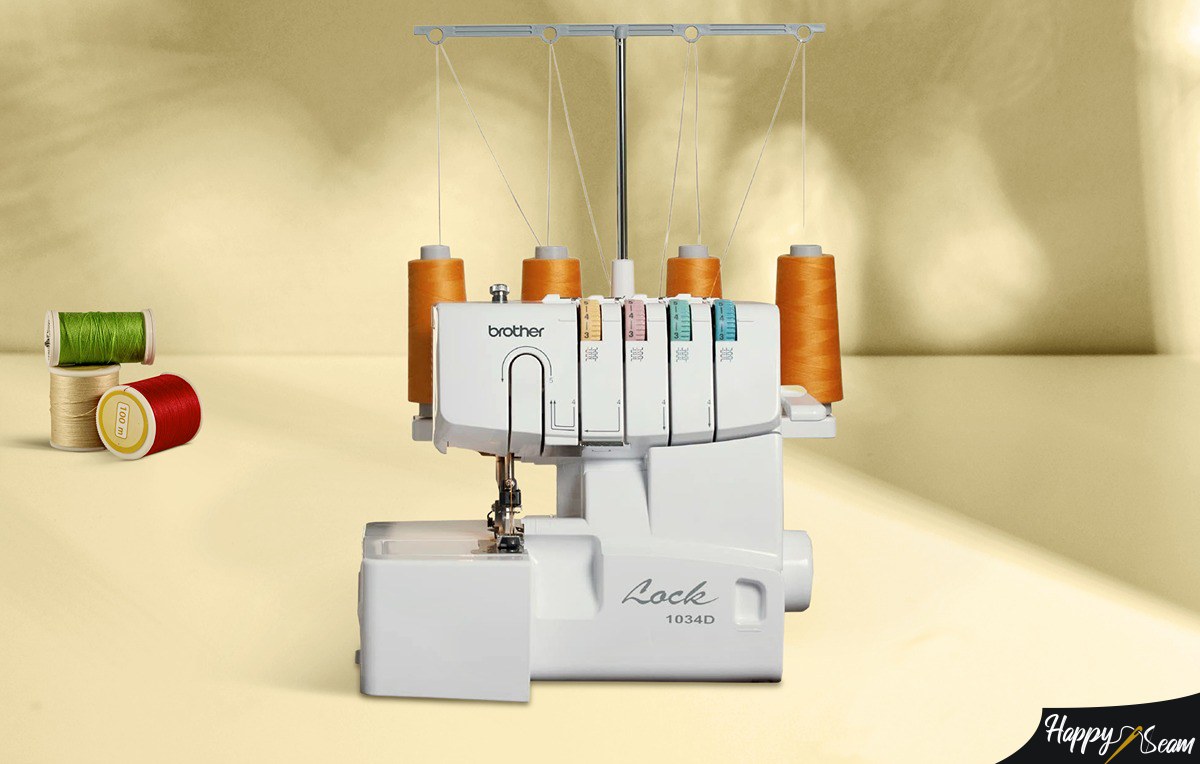
As a beginner, one of the first machines I got was the Brother Serger 1034D. since I needed a machine that can sew seas professionally and yet fast. And honestly, I was not disappointed whatsoever.
The brother Serger 1034D overlock machine did its job perfectly and accurately. The first thing I loved about it was its speed, it does 1300 stitches per minute. It helped me manage my time better, everything was done right on time.
Also, I used to have to trouble sewing thin fabrics with the sewing machine that I owned. It would overstitch the material or it would bunch it up. It used to ruin my fabrics most of the time.
But that was not the case with brother Serger 1034D. The fabric feed of this machine is adjustable, thus making it extremely easy to sew thin or knitted fabrics for me.
Personally, I hate when things are made complicated for no apparent reason. That is why I adored the brother serger 1034D. It is so simple to lay in the threading on this machine.
It has a color-coded guide that leads you through the process in a straightforward manner.
It was simple enough for me when I first started my sewing hobby. And it remains sophisticated and advanced enough for me now, that I am a more experienced sewer.
The LED lights helped me a lot since I used to sew mostly after 8pm after I would get back home from my full-time job of 9-to-5. The lights illuminated everything on the working table, making it bright and clear for me to sew freely without adding emitting too much heat.
The knife blade on this machine is retractable, which is pretty convenient because it will not get in your way while sewing.
It has a 3-4 thread system, so you automatically get a wide variety of stitches. To be more precise, twenty-two built-in stitches in total.
The thing that let me down a little bit, was the fact that the Brother 1034D serger does not have a thread cutter. So, you need to keep scissors nearby at all times.
4. Brother Cover Stitch Serger 2340CU
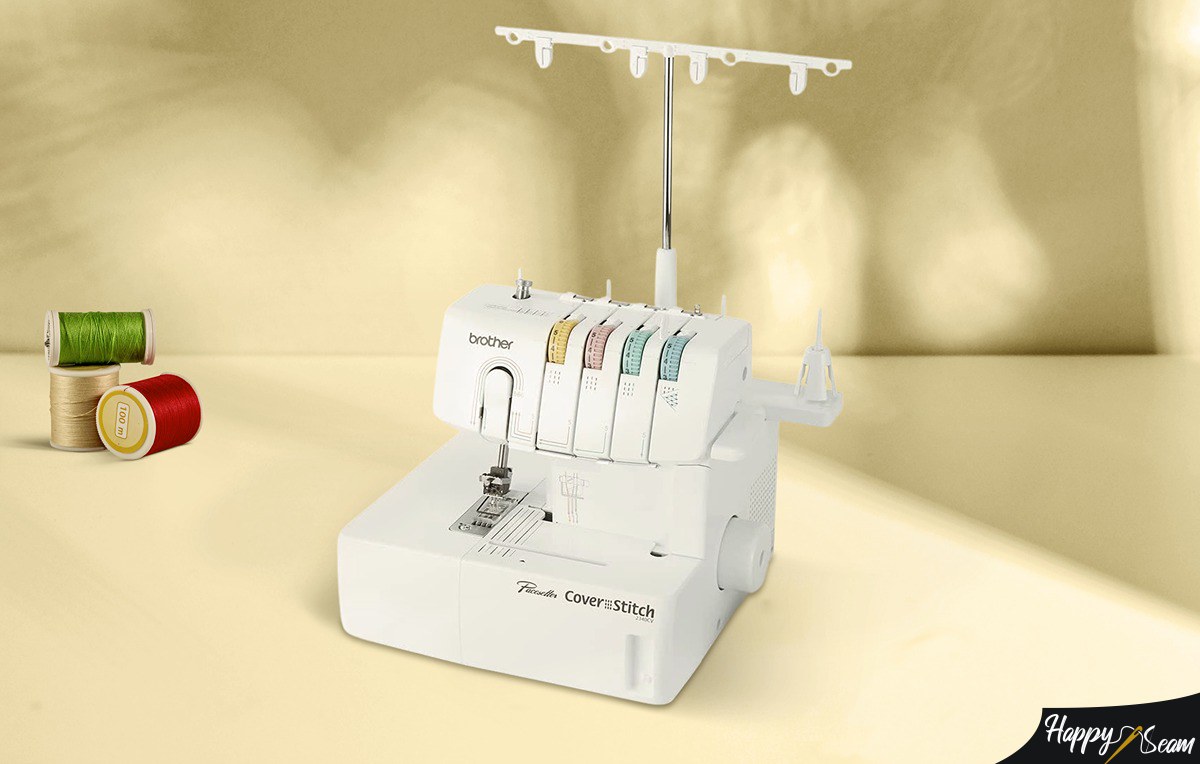
As the name itself implies, this machine is formulated to do cover stitches for a variety of purposes, on a variety of fabrics.
It is very similar in function to the Brother Serger 1034D except for the cover stitch feature.
My mom has had a Brother cover stitch serger for a long time and she was very pleased with it and its functions. Each time you sew anything with this machine you are going to have a high-quality finish on your garments as if they were done by a professional factory.
It is a fast machine which makes it possible for the work to run smoothly and fast. It has a speed of 1100 stitches per minute.
It can do an amazing job with stretchy, thin textiles, because it does not damage the material since it has an adjustable stitch width feed that can feed all kinds of materials, from thick heavy duty to thin delicate materials.
My mother used to sew my silk pillowcases since I was a little girl, she would sew me knitted dresses, Tee-shirts with decorations, and a lot of other garments. This machine was able to do it all, fast and perfectly.
I miss those sweet little projects she used to do for me because I would get so many compliments for them from my friends. And now she cannot sew due to old age, now I sew for her anything she needs and wants.
Isn’t it funny how things can change over the years, I am glad she taught me her sewing skills so I can return her love and attention through small sewing projects.
She would decorate my garments, like my shirts for school, with the wide cover stitch. That is a two-needle, two threads cover stitch of 6 mm. The garments would turn out gorgeous and unique.
The machine also had two more stitch options:
Narrow cover stitch,3 mm. One needle three threads cover stitch which is mostly used on delicate fabric and topstitch.
And the last one is the chain cover stitch, which is also one needle, three-thread cover stitch, which is used for hems.
The cover stitches that this serger can do are impossible to fray because the machine is designed to create a durable cover stitch. It is not a machine that will cut the excess fabric as a serger. That is why you can attach tape, elastic, and lace while you are sewing.
3. Singer SO100
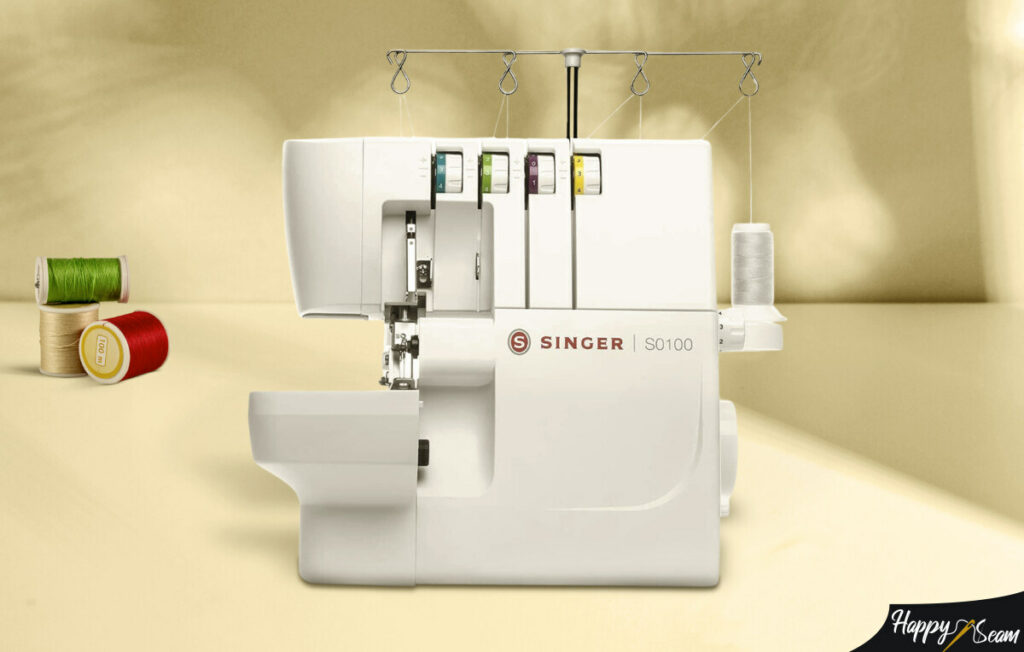
I haven’t had the luck to own this machine, unfortunately. But I have seen the work they can do, and it has always amazed me.
The Singer SO100 Serger has the 2,3,4 thread options and the ability to sew delicate ruffles on tutus or finish edges and seams on denim or knitted fabric. It also has the option of a topstitch which reinforces the seams.
The threads have a role in this serger. With the two threads you can do scarf edges, and decorative finishes.
With the three threads stitch you will create custom designs of seams on knit fabric, also you will be able to attach beads.
And the last one, the 4-thread stitch is the one you are going to use for attaching the zippers, crotch seam gatherings, etc.
The great part of this machine is that it has the option to attach a free arm to it, which comes with a built-in stitch plate, bobbin race, and feed dogs. This attachment allows you to sew tubular items perfectly without any mistakes.
It has a differential feed mechanism. You adjust the speed of each needle separately. One needle remains on the back and the other one in the front, so you can choose different speeds for each needle, or you can choose the same speed for both of the needles.
This system helps the sewing process when you are sewing textiles that tend to pucker or bunch up because of their texture. The only cons and downsides of this serger are two: It does not own a thread cutter, so you must keep your scissors nearby.
The second downside is that it is more of a professional machine since it lacks the ability to do basic stitches which are required of hobbyists and sewing beginners.
2. Juki MO654DE Serger

Considering the fact that Juki MO654DE is a small machine in size, it is surprising how powerful and practical it can be. You can easily transport it according to your needs, due to its small compact size.
Despite the size, it is a fast serger, with up to 1500 stitches per minute. It has a differential feed and built-in rolled hemming. Which allows you to sew thick as well as thin materials with ease.
The color-coded threading guide makes the threading process a piece of cake even for beginners. The built-in roll hem gives you the chance to create the most perfect rolled edges.
The adjustable stitch length can be adjusted from 1-4 mm as per your desires. Just by turning the dial on the side of the serger. It has a snap on presser feet, so you can change them depending on the action you want to take, or with which kind of fabric you are working.
The multipurpose foot helps you to do overlock stitches as well as insert tape, elastic, ribbon, or sequins on your projects as decoration.
It is a double needle,2/3/4 thread serger. The width of the overlock on this serger:
- 6mm- left needle
- 4mm-right needle
1. Janome 634D
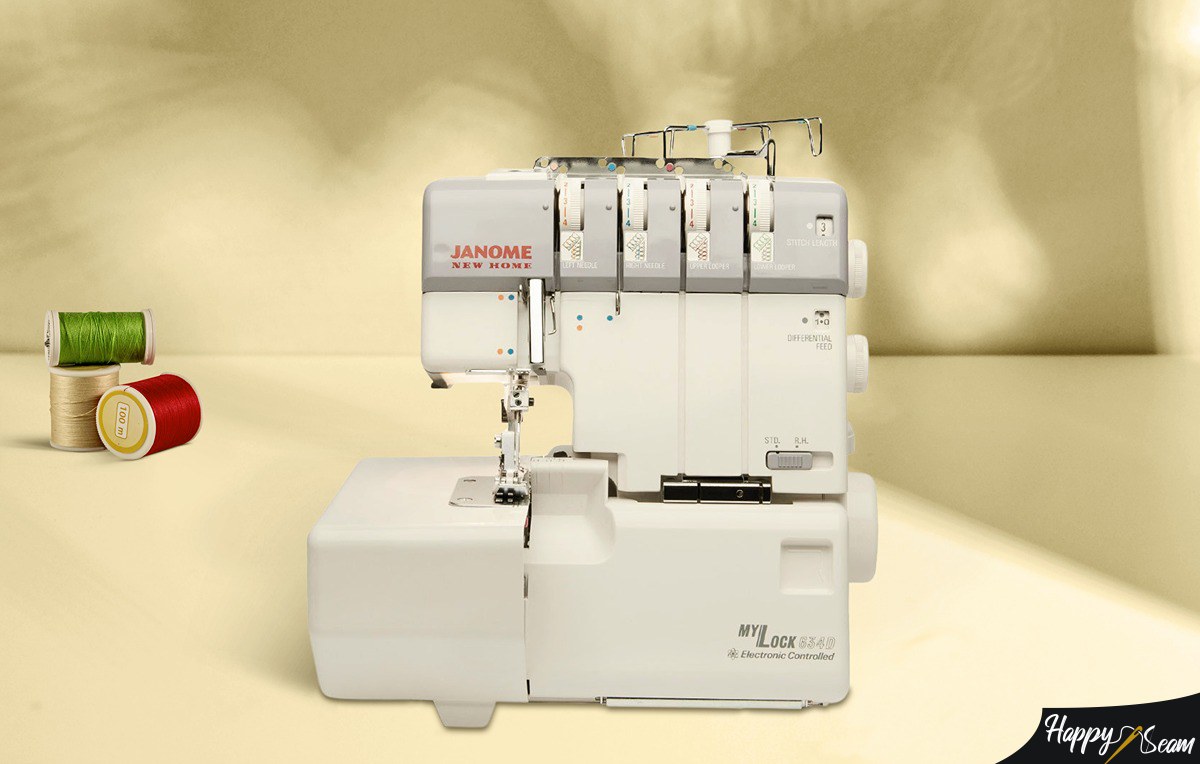
I stumbled across this machine while I was helping my friend for a few months at her sewing workshop since she had an overload of orders and was understaffed at the moment.
She owned a serger Janome 634D in her workshop, so I got to use it while working with her. I was very surprised by the wonderful job it does.
My friend told me she would never trade it for any other serger out there. It is a great machine that matches her requirements.
She trains new sewers who are starting in the business of sewing, and for them, the Janome 634D is the best serger to use because it can only do basic serger tasks. Therefore, it does not overwhelm beginners to a point of quitting their passion.
It is a 1/2 needle serger, with 2/3/4 thread. I got a bit on my nerves while I was using it because I am used to machines having special compartments meant for tools and stuff you need while sewing. And this serger does not have that.
So, I had to be creative with finding a way how to store my needles, scissors, tweezers, and other tools.
One of the many features that make it a perfect match for beginners is also the color-coded thread guide. Threading a machine can be complicated at times, so making it a simple process helps a lot.
Also, the lay-in threading system and the differential feed make this serger a versatile machine able to use with whatever materials your project requires. You can change your machine settings from standard sewing to rolled hemming features.
It has a retractable knife blade, so you can put the blade away when your fabric does not require cutting. It has a snap on presser feet: Blind stitch foot, piping foot, taping foot, and beading attachment. It was an ideal serger to work with, whether you are a sewer who has never used a serger.
Or you are a fresh beginner in the field of sewing. This machine is a great choice either way. Even for me, a person that has used a serger and a sewing machine for years since I started sewing. I was able to work on this machine and enjoy every bit of it. It is a compact, machine which you can take with you to classes, your friend’s house, or even on a vacation.
Buying Guide

What Does A Serger Machine Represent?
What does a serger machine represent? The function and work that a serger can do, the sewing machine cannot accomplish. They can not replace each other, but they can complement each other with their work.
Serger machines do an overlock stitch. A stitch that none of the sewing machines could do. It combines three distinct functions, it simultaneously sews the seams, trims seam allowances, and finishes raw fabric edges.
A sewing machine does a topstitch, while the serger cannot. It is a great machine for beginners since it does many functions at once, and has high speed, so you finish your projects faster.
Things To Consider
There is a wide range of sergers on the market. With a wide range of features and accessories. You can easily get overwhelmed and confused about which one to choose when you try to buy one. Especially if you are a beginner.
One of the things to take into consideration, according to my experience, would be, do you plan to do basic stitching, or do you need a serger with more advanced features.
The best serger for beginners would have to be more of a basic stitch machine, so as not to overwhelm the person to the point of quitting their passion.
Sergers mainly have very similar features and roles. But there are a few things you should look out for when it comes to the features of the serger.
A differential feed is a must-have because without it the fabric will be puckering and bunching up. Look for a machine that has a free arm so you can sew on tubular items, like the arms of sweaters or pant legs.
Features To Look For
If you are a person who looks for a chance to experiment more with their sewing projects then the features you need, in addition to the ones we mentioned above, are:
Easy rolled hem conversion, so you can switch faster from an overlock into rolled hemming. An extension table for your bigger projects, so it can fit your large fabrics.
A high presser foot lift so it can fit thick materials without any trouble. A serger with more snap on feet will give you the chance to do a variety of stitches.
You should also take into consideration your budget and how much you can afford to spend on a serger. Especially if you are a beginner in this field.
We have all been there, we have all been beginners, and we know that during the starting points of the carrier the budget can be pretty tight, especially in this profession.
Frequently asked questions
What should never be used when serging?
Never use old cotton threads. They are usually a poor choice for serger sewing. Sergers have a lot of pressure which can snap and break the cotton thread.
Should I serge before or after sewing?
I would recommend that you serge first and then sew, this allows you to serge the pieces and then merge them together to get to the gorgeous professional finish.
Can I make clothes with just a serger?
Yes, you can create a whole knitted sweater with just your serger. You don’t need a sewing machine for spandex or knitted fabric.
Final words
A serger is a useful and practical addition to your sewing equipment. It can give a professional finished look and offer some features that basic sewing machines can’t do.
The best Serger for beginners would be the serger that suits you the best according to your needs, and the types of projects you sew.
If you are a beginner don’t be spooked out by the serger, it is not a complicated machine to use or maintain.
I have been in the embroidery field for over 10 years. My career first started when I was an apprentice to a local seamstress where I started to learn the basics of garment construction and alterations. That’s where I started to love sewing and began to hone my skills even more.



